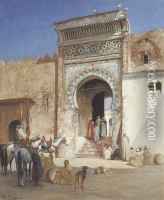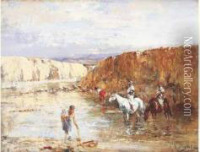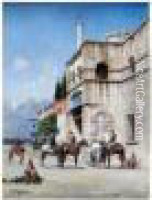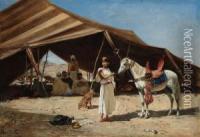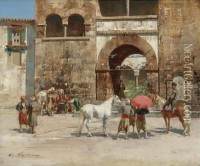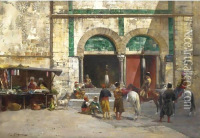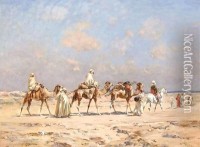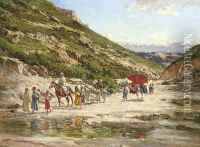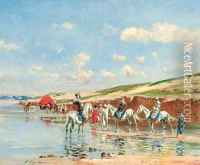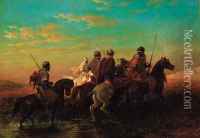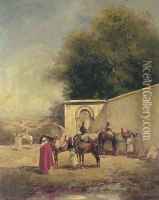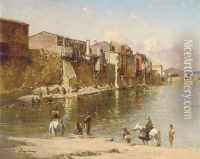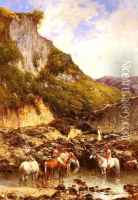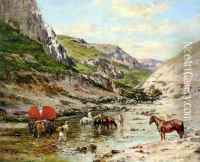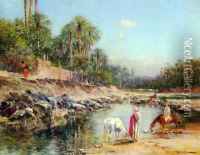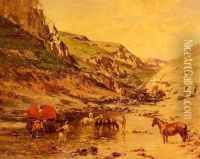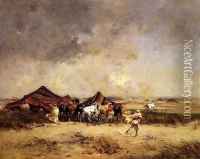Victor Pierre Huguet Paintings
Victor Pierre Huguet was a 19th-century French Orientalist painter known for his landscapes, scenes of desert life, and detailed depictions of North African and Middle Eastern subjects. He was born on February 11, 1835, in Marseille, France. Huguet developed an early interest in painting and was drawn to the Orientalist genre, which became popular in Europe after the French colonization of North Africa and the growing fascination with 'exotic' cultures.
Huguet studied under Émile Loubon in Marseille, who was a landscape painter and played a significant role in shaping his early artistic development. Loubon's influence is evident in Huguet's attention to naturalistic detail and his ability to capture the luminosity of the Mediterranean light.
Throughout his career, Victor Pierre Huguet traveled extensively in North Africa, particularly in Algeria, which was a French colony at the time. His travels provided him with ample inspiration for his artwork, allowing him to observe firsthand the people, customs, and landscapes that he would later depict in his paintings. His works often featured Bedouins, camels, and Middle Eastern market scenes, rendered with a romantic yet realistic touch.
Huguet exhibited his paintings in Paris Salons, earning recognition and praise for his artistic talents. His paintings were well-received by the public and collectors alike, contributing to the European interest in Orientalism during the period. Although Orientalist art would later be critiqued for its romanticized and at times stereotypical portrayal of Eastern cultures, Huguet's work was characterized by a level of respect and detail that spoke to his personal experiences in the regions he painted.
Victor Pierre Huguet's contributions to Orientalist art remained influential, and his paintings are today considered important examples of the genre. His works can be found in various art collections and museums, offering a window into the 19th-century European fascination with the 'Orient.' He passed away on September 19, 1902, in Paris, but his legacy continues to be appreciated by art historians and collectors worldwide.
